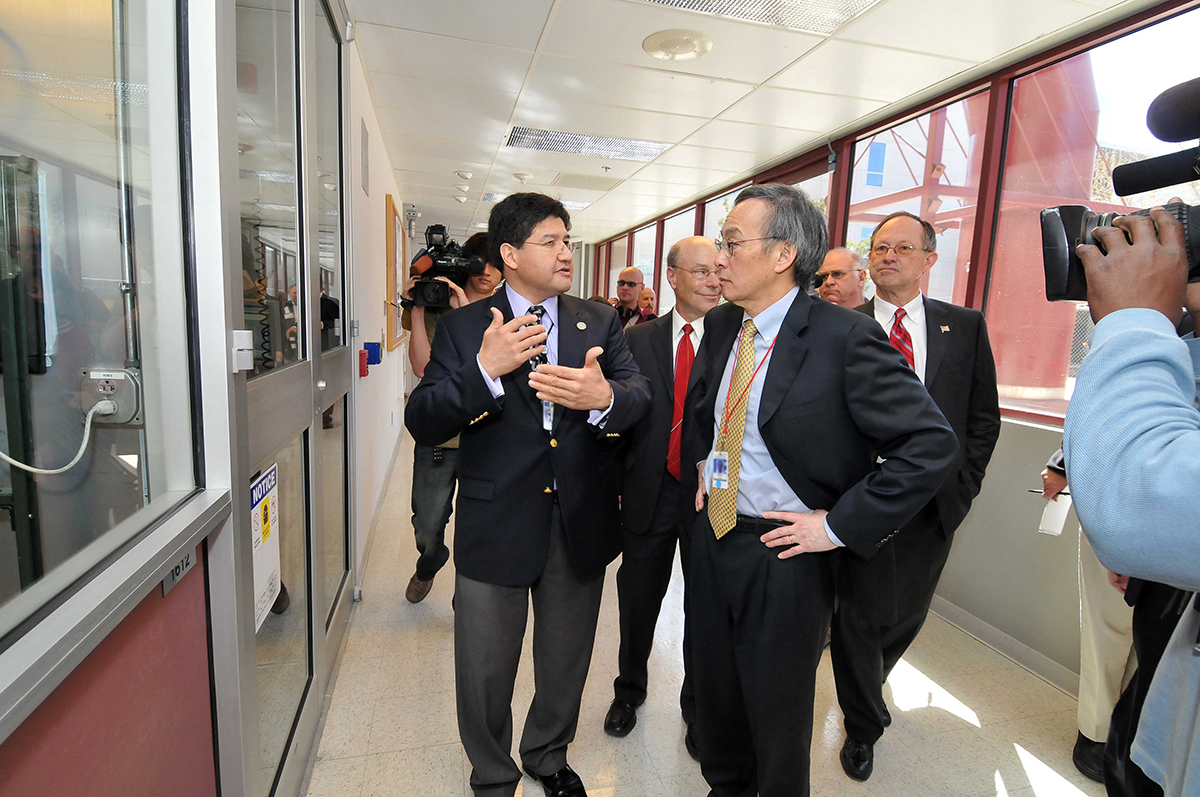Gil Herrera: His time to help UNM and New Mexico thrive
His story

Gil Herrera is one of the School of Engineering’s greatest success stories and an embodiment of how we transform lives. Growing up underprivileged to parents with a middle-school education, he attended West Mesa High School, which offered “a lot of shop” but no college prep courses like calculus or Biology 2. Despite that, he was a very good student and was accepted into both MIT and West Point. He chose the latter.
After spending three semesters at West Point, where he was a kicker on the football team, he was injured, then decided to come back home to attend UNM to study computer engineering.
“UNM for me was a nice, solid transition,” Herrera said.
He maintained his honor-student status even with taking 19 to 23 credit hours a semester, earning his bachelor’s degree in 1981 and his master of science in electrical engineering from the University of California, Berkeley, in 1982. After graduating from UNM, he began a long career with Sandia National Laboratories, where he was named a Laboratory Fellow in 2018, one of only 15 in Sandia’s history. Along the way, he held a variety of positions there, including director of the MESA complex. He also served as the director of the Laboratory for Physical Sciences — a joint University of Maryland and U.S. government research institute — and served at the White House Office of Science and Technology Policy as an American Association for the Advancement of Science/Sloan Fellow under President George H.W. Bush, where he worked on semiconductor and technology transfer policies.
In 2020, he was appointed to the newly-established U.S. National Quantum Initiative Advisory Committee, one of two committee members representing the Department of Energy national laboratories, and one of just 21 members who are tasked with advising the nation’s highest offices on matters concerning quantum information science. And in 2021, he made the decision to leave Sandia after 40 years of service when he was offered an incredible opportunity — being appointed director of research at National Security Agency (NSA). NSA’s Research Directorate conducts world-class scientific research to develop innovative techniques and technologies to enable the signals intelligence and cybersecurity missions of NSA, as well as joint-authority missions of the intelligence community and Department of Defense.

Herrera said that without his UNM education, none of his success would have been possible. He remembers the many opportunities provided to him along the way, including holding a research fellowship in the math department as a student, and later as an adjunct professor of electrical engineering.
“What UNM did for me was incredible,” he said. “It was just an incredible pathway.”
How he is giving back
Herrera feels strongly about the power and potential of education to transform lives, both individually and collectively. The Herrera Engineering Excellence Fund will provide funds to the School of Engineering where it is needed most. As a native New Mexican and longtime Sandian, he sees what is possible when education is prioritized.
“Education is key,” he said. “UNM is the biggest, most important institution in the state. Their role is critical in creating a pathway for those who want to excel to do so. They are a keystone of the state.”
He said his family has roots in New Mexico back to the 1600s, so he has a vested interest in seeing not just UNM but New Mexico succeed.
“My commitment is to New Mexico. We need to stop being the 48th state. That’s why I’m on so many advisory committees and boards at UNM, dating back to 1984,” he said.
He views supporting the School of Engineering as an important piece of supporting the state and its future economic potential.
“Our future is in energy and information technology,” Herrera said. “This extends to all branches of engineering, and the School of Engineering needs to have a major role in these areas, from cyber to energy to emerging computing technologies. I am very interested in advising where the school should lead in the next decade. I want the state to thrive, and UNM will be a major part of that.”
